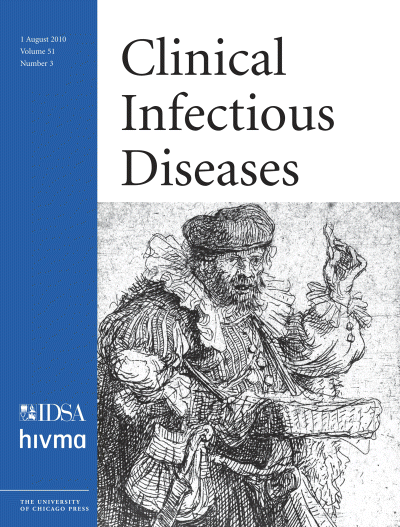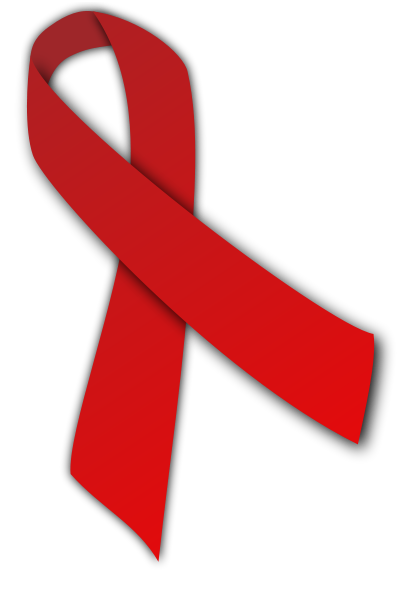An ongoing dialogue on HIV/AIDS, infectious diseases,
December 17th, 2010
Update on Berlin Patient II: Still Cured of HIV
First, who was Berlin Patient I?
Second, over in the journal Blood is the latest update on Berlin Patient II, the guy apparently cured of HIV by bone marrow transplantation:
We have previously reported the case of an HIV-infected patient in whom viral replication remained absent despite discontinuation of antiretroviral therapy after transplantation with CCR5Δ32/Δ32 stem cells… In the present study, we demonstrate successful reconstitution of CD4+ T cells at the systemic level as well as in the gut mucosal immune system following CCR5Δ32/Δ32 stem cell transplantation, while the patient remains without any sign of HIV infection… In conclusion, our results strongly suggest that cure of HIV has been achieved in this patient.
Ever since this was first presented as a poster at CROI in 2008, it was pretty clear that this was a special case, and I’ve written about it several times before — first time here.
What’s different now, of course, is that the longer duration of follow-up has allowed the authors to give much more detailed information about both his virologic and immunologic status — and to make more confident statements that he is in fact cured of HIV.
 And I agree.
And I agree.
But numerous questions about this fascinating case remain, including the biggie — how did this happen? Was it the CCR5-negative status of the donor’s cells? Something about the “conditioning” (there’s a euphemism for you) regimen? The fact that he’d been virologically suppressed when he went into the transplant? (It’s obviously not just this.) Some combination of the above?
And though of course this transplant strategy can’t be widely adopted, one would expect at least one other similar case to surface soon, right?
By the way, for HIV history trivia buffs, this guy was Berlin Patient I. Must be something in the water.
December 13th, 2010
My (Second) Favorite Journal Switches Publishers
 I absolutely love the journal Clinical Infectious Diseases.
I absolutely love the journal Clinical Infectious Diseases.
It’s easily my second-favorite journal.
(Can you guess my favorite? Perhaps this new “About this blog” section will give you a hint.)
But back to CID — here’s why I love it:
- Great content. Seems every issue has fascinating studies, usually of great clinical relevance to the field of Infectious Diseases. In this issue alone, tons of stuff on influenza, but also a randomized trial of cranberry juice for recurrent UTI (negative, oh well), a terrific editorial on MRSA, and the usual smattering of interesting HIV/AIDS studies.
- Lots of it, too. Plenty to read each month (all kinds of studies, editorials, photo quizes, reviews, letters), and more rolling in all the time electronically. Each year content from CID is among the top sources for both our ID and HIV Journal Watch newsletters. To quote our Executive Editor in Journal Watch: AIDS Clinical Care, “Don’t those guys ever sleep?”
- Terrific web site. Could this be the single most user-friendly web site in the business? I love the way the issues are laid out on-line, with the left panel allowing quick and easy access to specific sections of the journal.
- Wonderful covers. Who knew so much art had an Infectious Diseases theme? Great stuff: Congenital syphilis in a Rembrandt portrait, Elizabeth I smallpox medal, St Sebastian lancing a plague bubo … Seems a graphic rendition of various scourges has been a popular art theme for some time, and CID is there to show us!
- Heavy paper. Well, that used to be a plus — now that I read most of the content on-line, it’s less important to me, but boy the shear heft of both CID and JID just exude quality.
Which brings me to their new publishers, Oxford University Press (OUP), who are taking over from the University of Chicago Press. According to Sherry Gorbach in his introduction, OUP won the right to publish CID “after a competitive bidding process” — one envisions something like what’s going on right now for Cliff Lee.
Not surprisingly, the new publishers have a new CID web site, and I must say on first glance it’s going to take a bit of getting used to. The old web site just scanned so easily. And with this revision, you can’t even click on the cover anymore to find out what it’s about — something I always enjoyed. (Here’s a nice example, reproduced in the picture above.)
Now I’m sure I’ll get used to it, it’s only been one issue. And it’s still a great journal.
December 9th, 2010
Chronic Lyme Tough to Diagnose, Tough to Treat
Over at the Chicago Tribune, there is this superb review of the Chronic Lyme disease issue.
Lyme disease is real. The bacterial infection, chiefly transmitted by deer ticks, can cause rashes, swollen joints and inflamed nerves, and usually is curable with a round of antibiotics.
But doctors around the country are telling patients with common medical problems such as back pain, poor concentration and fatigue that their ailments stem from a chronic form of Lyme disease that can evade standard treatment and wreak havoc for years. To fight what they believe is a persistent infection, the doctors often order months or years of intravenous antibiotics, which can cost tens of thousands of dollars.
Strong evidence isn’t on their side. But in a golden age of dubious medicine, that doesn’t matter.
My advice: read the full article, as I cannot recall a better summary in the lay press of this highly-contentious topic.
Oh, and for the record, in my experience there are few encounters more challenging in ID practice than addressing the diagnosis of “chronic Lyme.”
Many patients given the diagnosis are (legitimately) so desperate to find an explanation for their suffering — and to do something rather than nothing — that they latch onto this unproven diagnosis and are willing to receive potentially harmful therapy rather than continue to live in misery without taking action.
And when, as an ID doctor, you review all the history and data and find no evidence of Lyme, you make a person who feels sick feel even worse — because usually there is no alternative infectious explanation for their various complaints.
It’s an unbelievably difficult situation. In many ways, chronic Lyme is even more difficult to treat than HIV — which was my original (jokey) title of this post, until someone told me it might be offensive. But you get my point.
So shared experiences, other thoughts, potential strategies for managing “chronic Lyme” — from my ID colleagues, from other providers, from patients — would be much appreciated.
December 6th, 2010
Tough Diagnoses: Neurosyphilis, Then and Now
 During Thanksgiving, my brother-in-law — who is a professional musician and also a passionate history buff — gave me a scholarly paper to review on the strange death of the famous American explorer Meriwether Lewis, of “Lewis and Clark” fame.
During Thanksgiving, my brother-in-law — who is a professional musician and also a passionate history buff — gave me a scholarly paper to review on the strange death of the famous American explorer Meriwether Lewis, of “Lewis and Clark” fame.
The bottom line? Lewis may well have had neurosyphilis — at least that’s the premise of the epidemiologist Reimert Thorolf Ravenholt, who, in a nearly 13,000 word report, ultimately concludes:
The fabric of evidence that syphilis acquired during the explorative trip to the Pacific Coast was the underlying cause of Lewis’s death includes these threads: (1) Lewis was in excellent health when he set forth up the Missouri River; (2) several Indian tribes suffering from syphilis were encountered; (3) sexual intercourse with women of these tribes by Corps members was frequently urged by the Indians and was commonplace; (4) several Corps members (probably at least eight) did develop syphilis; (5) when encountering the Shoshoni tribe on the Continental Divide, Lewis had both a propitious opportunity and a compelling need for sexual intercourse; (6) a few weeks later, he developed illness which became severe and disabling for several months, but the nature of which was not described; (7) for some months in 1807, following his return from the expedition, he was incapacitated by illness, the nature of which was not divulged; (8) during 1808-809, he developed progressive illness afflicting his central nervous system and diminishing his judgment faculties; (9) his terminal months in 1809 were characterized by progressive, episodic, febrile illness, with severe mental and behavioral disorders highly characteristic of paresis; (10) Lewis himself recognized that he was suffering from a progressive disease likely to be fatal; (11) Thomas Jefferson and William Clark readily understood why his death was a probable act of self destruction.
Emphatically not the Lewis and Clark story I learned in 5th Grade!
But sure, the diagnosis of neurosyphilis sounds plausible. Sexual indiscretion followed by rashes followed by a progressive neurologic disease with increasingly bizarre and unreliable behavior. (Not so sure about the fever part.)
But while these speculative diagnoses are fascinating both historically and medically (Mozart’s death has 325 citations in PubMed), one inevitably gets back to the problem of confirming the diagnosis, which is almost always impossible.
Furthermore, there are several reasons why neurosyphilis is in particular a difficult diagnosis to prove, even today, including:
- Protean symptoms that wax and wane.
- Variable latency period.
- Relatively uncommon, especially since the discovery of penicillin.
- Unreliable diagnostic testing and no readily available culture.
- Clinical and lab-based manifestations have significant overlap with other diseases.
- Lots of what was called neurosyphilis back in the day probably was something else, making much of the clinical teaching about the disease highly subjective.
In fact, with the exception of obvious cases — ocular disease concurrent with secondary syphilis, or CSF pleocytosis and positive VDRL in the setting of a classic clinical presentation — it otherwise seems that the diagnosis of neurosyphilis is made only after an esteemed clinician definitively, confidently, and loudly states THIS IS NEUROSYPHILIS.
Especially if that clinician has a certain well-aged gravitas.
December 1st, 2010
World AIDS Day: See You in Kuala Lumpur
 A few random thoughts on this 2010 World AIDS Day.
A few random thoughts on this 2010 World AIDS Day.
- Now you can mark your calendars for the next three International AIDS Society/World AIDS Meetings: 2011 in Rome, 2012 in Washington, DC — and now, 2013 in Kuala Lumpur, Malaysia. And what do all 3 of these cities have in common? Extreme summer heat! (For Kuala Lumpur, it’s actually just extreme heat, not just in the summer.) Probably some sort of weird compensation for several frigid February’s at CROI.
- Not mentioned in my discussion of the once- versus twice-daily raltegravir study was the study name — which was QDMRK. Yes, the sponsors (can you guess who they were?) continued the self-referential theme that started with BENCHMRK, followed by STARTMRK and then SWITCHMRK. Could a study of coffee be planned, “PERCMRK”? Of the Thanksgiving meal, “TURKMRK?” Or of how to avoid a task, called “SHIRKWORKMRK?”
- On the topic of study names, this really has been a banner period for acronyms. Here’s a partial list just from this year: CAPRISA, CAMELIA, PROGRESS, SPARTAN, ECHO, THRIVE, SHIELD, VERXVE, VIKING, SPRING, SPIRAL, ODIS, ROCKET, SENSE, METABOLIK, ATLAS, ATLIS (yes, there’s both an ATLAS and an ATLIS). Trust me, I live and breathe this stuff daily, and still have trouble keeping all of them straight.
- Some good news on the HIV testing front in this report from MMWR: Compared with 2001, today more people are aware of their HIV status, and “late” diagnoses are declining. However, it’s still striking that even though we’ve had effective HIV treatment for nearly 15 years, around one-third of people are still diagnosed with HIV when they’ve already had complications from AIDS or have severe immunodeficiency.
Anyway — what are your thoughts on these red ribbons? Powerful awareness tool, helpful in keeping HIV on the radar screen? Or over-commercialized, politically-correct, past-its-prime symbol? You decide …
November 29th, 2010
Once-daily Raltegravir “Not Non-Inferior” to Twice-Daily
In your electronic in-box this AM, this press release from Merck:
… although the treatment regimen that included ISENTRESS once daily enabled more than 80 percent of patients to achieve viral suppression, ISENTRESS once daily did not demonstrate non-inferiority to the treatment regimen that included ISENTRESS twice daily. Merck said that based on the initial results, and following the recommendation of an independent Data Monitoring Committee, Merck will end the study
Raltegravir is of course still a great HIV drug, and its approval in 2007 marked one of the great steps forward in the history of HIV therapeutics.
I still remember John Mellors at CROI 2007 preparing us to see the BENCHMRK data for the first time — his exact words were probably not, “this will knock your socks off”, but they could have been. Never before had any antiretroviral agent done so spectacularly well in patients with high-level resistance, and it’s hard to estimate how many patients with longstanding HIV infection have had their lives literally saved with raltegravir.
But is it a once-daily drug? Probably not based on the results of this study, where twice-daily was simply better — or, to be more statistically precise, once-daily did not demonstrate non-inferiority.
And in an odd recapitulation of the early days of the protease-inhibitor era, the story is quite similar to what happened to indinavir, another Merck antiretroviral:
- Both drugs were major advances in the field
- Both drugs had an odd disconnect between PK and response
- Both drugs failed tests of less-frequent dosing
The major difference, of course, is that even the once-daily raltegravir arm in this study did quite well — an 83% response is not too shabby.
It’s just that today, our standard-of-care for first-line therapy is (wonderfully) high, and the twice-daily treatment arm had an 89% success rate, with the advantage seen in particular in patients with HIV RNA > 100k. The difference in response put the once-daily approach just outside of the protocol-specified criterion for non-inferiority.
And this steep price of entry for treatment-naive options is why both elvitegravir/c and 572, though promising, still have their work cut out for them.
November 23rd, 2010
iPrEx: First-Ever PrEP Efficacy Study Published
 It’s been quite the year (plus a month) for HIV prevention research.
It’s been quite the year (plus a month) for HIV prevention research.
That glimmer of hope from the Thai vaccine trial. The striking effect of HIV-treatment as prevention. The positive results of the CAPRISA vaginal microbicide study, which were presented to rapturous applause this summer in Vienna.
And today, the iPrEx study is published, which shows that giving TDF/FTC to HIV-negative, high-risk men who have sex with men (MSM) reduces their risk of acquiring HIV by 44%. It’s the first efficacy study of pre-exposure prophylaxis (PrEP) and will undoubtedly generate plenty of discussion.
For a detailed scientific analysis of the trial, two HIV prevention experts have already provided their commentary, Nelson Michael in NEJM and Raphy Landovitz in Journal Watch AIDS Clinical Care. I highly recommend both.
But every HIV specialist/Infectious Disease doctor will have thoughts on this important study, so in no particular order, here are mine:
- A few doctors (mostly those with patient panels with large numbers of MSM) anecdotally have already been prescribing PrEP, at least to a limited extent. If this practice expands, will insurance cover it? Like virtually everything else in our patchwork healthcare “system”, I suspect this will vary widely from plan to plan and from state to state. And you can be sure that for the time being this will not be covered under the state-based AIDS Drug Assistance Programs (ADAPs).
November 17th, 2010
Ferlater Antibiotics
 In this absolutely hysterical, laugh-out-loud comedy routine, Mal Z. Lawrence describes a woman at a Catskill hotel, piling danish into her handbag.
In this absolutely hysterical, laugh-out-loud comedy routine, Mal Z. Lawrence describes a woman at a Catskill hotel, piling danish into her handbag.
She calls them “ferlater danish” — as opposed to the ones she’s eating at breakfast, those are “fernow.”
Did you ever have one of your patients request “ferlater” antibiotics? That is, ask that you write a prescription for an antibiotic even though they’re not sick now, just in case they become sick?
Over at the “The Ethicist” column this week in the Sunday New York Times, Randy Cohen fields a question from a woman whose husband has just developed pneumonia on a trip to Peru, even though he’d requested (and had been refused) antibiotics from his doctor before he left. “Was the doctor overly rigid?” asks the woman. Responds Cohen:
This doctor does seem disturbingly conservative… So, yes, I’m with you, and so is Dr. Jane O’Shaughnessy, an expert in emergency medicine, who e-mailed me to say, “Prescribing antibiotics and other medications tailored to the trip destination is usual practice among doctors who specialize in travel medicine.”
On first glance, this seems right, especially since the man had a history of recurrent respiratory tract infections.
But Mr. Cohen and Dr. O’Shaughnessy should know it’s not always quite so simple. First, travel medicine and ID specialists — and I wonder why Cohen asked an ER doc rather than go right to the source — recommend providing antibiotics before trips to developing countries in case diarrhea develops, but not in general for respiratory tract infections, most of which are viral anyway.
Second, let’s say he did get the antibiotics — would this have necessarily prevented the pneumonia? Who’s to say?
Third, it’s important that Times readers know just how often clinicians get asked for “ferlater” antibiotics, usually with far less justification than in the anecdote presented in the Times.
And rather than displaying excess rigidity, doctors and nurses who say no to this request are generally acting with very sound judgment.
November 12th, 2010
Tesamorelin is Approved
 This just in from the FDA:
This just in from the FDA:
The U.S. Food and Drug Administration today approved Egrifta (tesamorelin) to treat HIV patients with lipodystrophy, a condition in which excess fat develops in different areas of the body, most notably around the liver, stomach, and other abdominal organs. The condition is associated with many antiretroviral drugs used to treat HIV.
While that opening sentence says it’s approved for “lipodystrophy”, this term alone is of course an oversimplification. The drug, a growth-hormone releasing factor, actually is indicated for visceral lipohypertrophy.
In other words, big bellies.
Those of us of a certain age can remember the first time we saw this happen to our patients. Typical case would be a person with advanced AIDS starting a combination regimen in the mid1990s, usually involving indinavir (hence “Crix belly” or “protease paunch”). In the excitement about watching viral loads go down and — more astonishingly — CD4 cell counts go up, we initially could overlook the beach ball-sized and very firm mid-section protuberance that was growing larger with each visit. “I look like Big Bird,” one of my patients memorably said. “Skinny legs, big gut.”
But eventually we had to do something, which usually led to an imaging test to exclude a mass or some other badness. When the radiologists reported the test as “negative”, we pressed them further — at which time they’d note that the abdomen was filled with fat. Not subcutaneous fat — in fact, the love handles and spare tires were usually absent — but visceral fat, lots of it literally encasing the organs.
Many of those patients are still alive, and of course there hasn’t been a whole lot we could offer them until now. And that’s what tesamorelin is for — treatment of HIV-related visceral fat accumulation.
(Quick aside: Isn’t “tesamorelin” a beautiful word? It sounds like a cross between an exotic Middle Eastern spice and a fine fabric used for making high-end Italian suits.)
So the indications for tesamorelin sound straightforward. But here are a few of the many questions raised by the approval of this unusual drug:
November 7th, 2010
Welcome to the Click-Fest
 Let me start by confessing I’m something of a gadget freak. I was an early Palm Pilot adoptor, loved the iPod from the get-go, and need to avoid CNET, Engadget, Gizmodo, and David Pogue’s columns for the New York Times when deadlines loom.
Let me start by confessing I’m something of a gadget freak. I was an early Palm Pilot adoptor, loved the iPod from the get-go, and need to avoid CNET, Engadget, Gizmodo, and David Pogue’s columns for the New York Times when deadlines loom.
Not surprisingly, I embraced the shift to electronic medical records (EMRs) enthusiastically. While I acknowledge that sometimes EMRs slow clinicians down a bit, and have terrible — horrible — interoperability (how’s that for a tech writer term?), I believe the net benefits from EMRs outweigh the problems. And our EMR has many time-saving and just plain nifty features.
However …
Every so often something happens with an EMR that is so shockingly inconvenient that it makes me wonder whether we’re on a road to EMR purgatory.
Example: prescription refills.
This is how we used to OK a prescription refill in our practice:
E-mail from RN or LPN: “Hi Paul, ok to refill Joe Smith’s Bextrim 10 mg?”
Response: “Yep, one a day, 11 refills. Thanks.”
[RN or LPN then refills via our EMR by clicking “renew” and sending electronically to pharmacy.]
Simple. Time required for MD? Around 3 seconds. Plus, easy to manage on a hand-held device — you don’t need a computer.
So here’s how we’re supposed to do it now (physician clicks or keystrokes in brackets):
- RN or LPN enters request for refill into queue.
- Email is automatically generated that gets sent to MD stating that he/she has a refill request. E-mail does not include patient name, medical record number, medication, or pharmacy info. It’s just a notification. In other words, it’s completely useless on a hand-held device — except as a form of taunting. “You have a task, but you can’t do it until you log into a computer, log into the EMR, and follow multiple steps — nah-nah, nah-nah.”
- At computer, MD clicks on email, then deletes it [clicks 1 and 2].
- MD switches to EMR [click 3].
- MD clicks on refill request [click 4].
- Refill screen appears. Screen looks like it was developed by a web designer who collects mouse clicks the way that some people collect pennies or odd bits of string — the more the better! It literally has four separate panels, each panel containing various radio buttons, check boxes, drop-down menus, scrolling lists, comment fields — a veritable panoply of web interactive tools.
- In second panel, MD clicks on “Renew” [click 5].
- At bottom of page, MD clicks on “Mark as complete” [click 6].
- At bottom of page, MD clicks on “OK” [click 7]. Yes, there are two separate clicks for “Mark as complete” and “OK.”
- “Sign” is now highlighted red in the menu. MD clicks on “Sign” [click 8].
- Sign page appears, with request to enter key. MD enters key [5 keystrokes] and clicks “OK” [click 9].
- Prescription page appears. MD clicks “Send” [click 10].
- Prescription is sent to pharmacy electronically.
Mind you, this is for one patient, and one medication. More meds and/or patients? More clicks.
I understand that there are medicolegal reasons for documenting that MDs review and approve renewals. But there has to be a better way — and of course, there are many, two of them implemented in the commonly-used electronic medical records EPIC and the terrific one at the V.A.
But until electronic medical record designers start reviewing “best-of” strategies from their competitors, I’m afraid there will be lots of these one-step-forward, two-steps-back experiences for us clinicians, just like this one.

